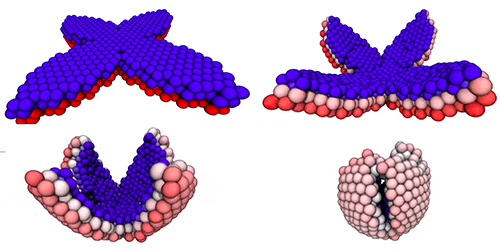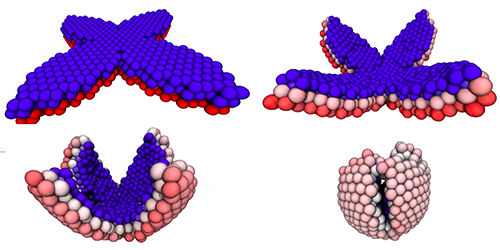Shape Shifting Water Droplets
Biological self-assembly—such as the folding of polypeptide chains into proteins—is the process by which smaller components spontaneously organize into ordered structures. Taking a cue from biology, researchers have engineered materials that, through self-assembly, fold into designated geometries. Recent work, for instance, showed that sheets of aqueous droplets can assemble into a variety of three-dimensional shapes. Expanding on this result, Mark Bowick and collaborators at Syracuse University, New York, have now demonstrated theoretically that such droplet networks can be programmed to reversibly switch between different shapes. This finding is a step toward biologically inspired robots that can change their shape according to their environment.
Bowick and his colleagues modeled sheets of micrometer-sized water droplets joined by permeable single lipid bilayers to form a tissue-like structure. By varying the concentrations of solutes within the droplets, the researchers created osmotic pressure that, by swelling some of the droplets and shrinking others, can cause the sheets to fold into several possible structures. The researchers focused on a configuration investigated in previous experiments—a four-petal design that spontaneously folded to produce a hollow sphere. They then demonstrated that they could reverse the shape change by placing the hollow sphere in a liquid medium with a higher solute concentration. According to their calculations, the droplets in the sphere lost water and shrank, leading the sphere to unfold back into the flat four-petal shape.
This research is published in Physical Review Letters.
–Katherine Kornei





